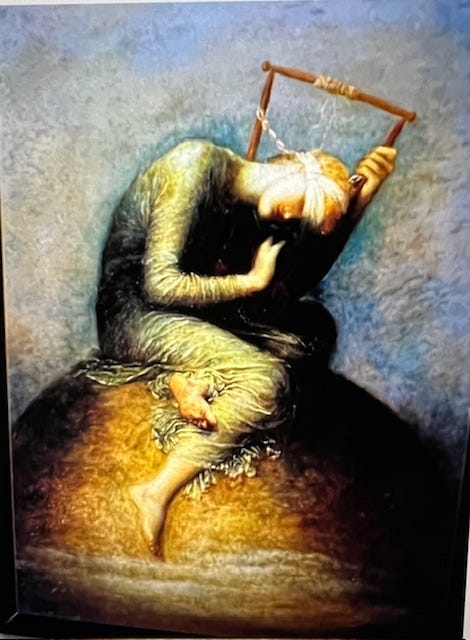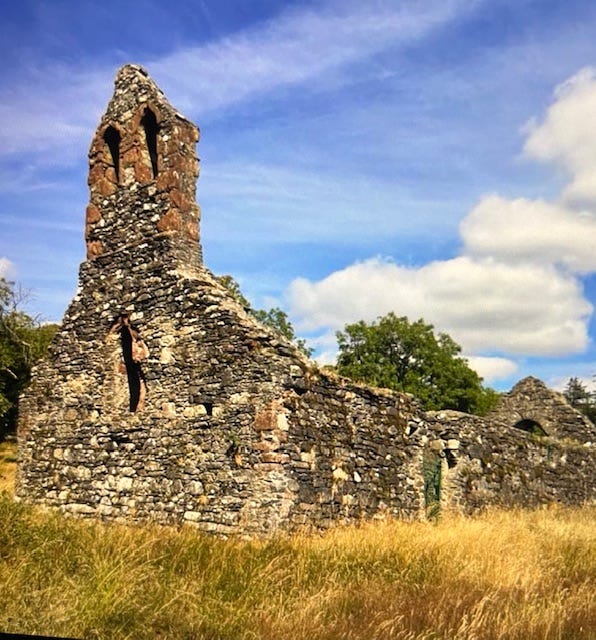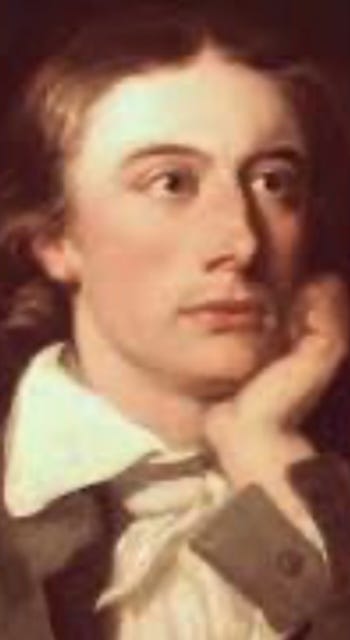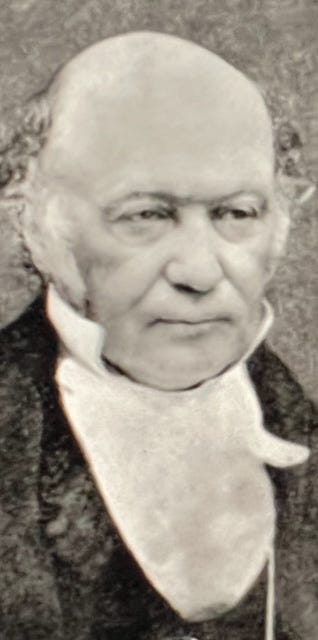ISLANDS IN SPACE
HOPE by WATTS
Three to love: Achill, Man, and Wight.
What is it about Islands? Small or large, we love them, and we are all living on the greatest Island of all, our Mother Earth in the Cosmos, a complex territory carrying seas with it, protected from so many dangers out there, and home to millions of species. That is the mandala of magnitude, and yet we can focus on the little details and find our own islands, those private spaces that we explore and keep returning to year after year.
I was born on an Island: Ireland, and therefore have a natural attraction for islands throughout the world. Here, so many magical things happen, especially on islands just off the coast of Ireland. Folktales and superstition tend to be rife.
ACHILL
On Achill Island stretching out from County Mayo, there is a bay called Keem Bay. My cousin Ken, my late husband Robin, and I, found Amethysts overlooking this bay, some just under the surface of the clay, beautiful Amethysts, Citrines and Smoky Quartz. We saw the gleam of them peeping through. It was on a day when a beautiful rainbow spanned the horizon. This was like finding gold at the end of the rainbow. Citrines are a golden yellow colour, caused by thermal heat from the mantle of the earth compressing and heating up the amethysts or smoky quartz.
Achill has a spectacular mountain ridge called Croaghaun with the third highest sea-cliffs in Europe, and Slievemore, another mountain juts up to a proper point, probably sitting on a bed of Amethysts. The locals sometimes referred to it as the purple mountain, believing it to be entirely made of amethysts below the soil. These mountains were obviously of a volcanic nature at one time, I would imagine.
I kept one of the Achill amethysts by my computer when I was writing about Cormac mac Airt, an Irish High King, an Ard Righ, who was known as a peace king in the third century. Acaill means ‘Eagle’ and in 1235 there was a reference to an island known as Accuill which means Eagle Island. We did not see any eagles there, but I could imagine them soaring high in the sky over the bays when it was a wild forested place.
Achill has had a long rolling history of inspiration, strange traditions like the ‘straw men’ that appear at weddings, amazing poetry and terrible sadness, war and famine, that eventually emptied the Island of its population in frugal times. Many families in America have their roots in Achill because of this. Now, many people have discovered this haven on the Wild Atlantic and returned to build white cottages here.
Germans are attracted here because of a famous novelist called Heinrich Böll, winner of the Nobel Prize for Literature, who visited frequently in the 1950s and 60s. He produced a travelogue called ‘Irish Journal’ (Irisches Tagebuch) and enthused about his love for Achill Island. He, along with his wife Annemarie also translated works by Flann O’Brien (one of my favourite quite dark comedic Irish writers), Brendan Behan, George Bernard Shaw and Synge who was also influenced by the Island. Heinrich’s cottage near Dugort is now a retreat for writers, artists and musicians.
THE DESERTED VILLAGE ON SLIEVEMORE MOUNTAIN
He loved the deserted village, hundreds of cottages vacated in the Black Death plague and then later during the exodus when the Famine struck Ireland in 1845 and caused the migration of families to America and other families moving to the coast to survive on fish and shellfish; the scourge before that during Oliver Cromwell’s invasion of Ireland, then the troubles in the 1900’s and 1920’s. These stone cottages were left to the ruination by the elements. Eventually they were taken over for ‘booleying’… the practice of taking livestock to pasture on Slievemore during the summer months when the farmers would live in ‘booley houses’, fixing them up for the season, one-room byres really, and then going back to the shelters of Pollock and Dooagh during the winter.
Famous artists and painters visited Achill, and it is a land that creates a ‘longing’, drawing souls back again and again. John Millington Synge, the famous playwright from Rathfarmham just outside Dublin, wrote his famed play called ‘Playboy of the Western World’. His character Christy Mahon was inspired by a callous murderous fellow by the name of James Lynchehaun who was a land agent for Agnes McDonnell, a wealthy eccentric English woman who had an estate on Achill called Valley House near Dugort. Her husband was a London barrister who rarely went near the island and perhaps this made her a bit cantankerous. However, falling out with Lynchehaun was a big mistake and led to his setting fire to her home and trying to kill her. The fire did not claim her life, but she lost an eye and her nose, and had to wear a silver plate to cover up the hole in the front of her face where her nose had been. Not surprisingly, she was always seen with a thick veil if she ventured out after that. The criminal fugitive escaped to America and later went to live in Scotland, never having had to face the law for his crime.
Quite a few wealthy wives and widows took residence on the island, such as Catherine Walston, an American wife of an English politician who had a cottage at Dooagh. Here, she had an affair with a revolutionary writer Erne O’Malley, and later with another novelist and poet Graham Greene who wrote ‘The Heart Of The Matter’ on the island. They stayed in the Ritz Hotel in Paris and visited Capri Island, Italy.
The belief in faeries and the supernatural is normal here and in the past. No-one ever cut into the mounds or rocks if they were cutting turf. The ‘slane’ (turf cutter) was never used for the ‘Sidh Grogini’, the houses of the faeries or ‘banshees’.
Before a new house was built, a ‘fairy spade’ or ‘faery spade’ was stuck into the ground first, and if it was moved during the night, or fell, then they would never dream of building in that place, knowing that humans were not welcome there.
There is a strange mist on the island that can chase behind one at odd times, right to the Michael Davitt Bridge that links to the mainland. Paul and Grace Henry captured this mist in their paintings around Keel and other places. This strange fog rolls off the Atlantic and sweeps across, veiling everything in sight. I have been in such a mist at Slievemore and at Knocknarea in Sligo. It is hauntingly beautiful and frightening at the same time. The rain can pelt down ferociously or just sprinkle the land and coupled with sunshine, it is like walking through a rainbow.
Mary J. Murphy wrote a brilliant book about the artists of Achill Island and those who were inspired to spend time there painting incredible sceneries. The paintings are stories in themselves.
Note: The nuclear waste from Sellafield in Cumbria has polluted the Irish Sea. Water is not safe to drink and Achill Island residents on that side were warned about drinking or washing vegetables from the taps. However, the seas of the Wild Atlantic Way in places such as Keem beach are considered the safest and most relaxing in the world
MAN
ROBIN ON ISLE OF MAN
Robin, my own lovely poet, was born on the Isle of Man, another mysterious island that has its own eco climate. His last album of music was called 50 Saint Catherine’s Drive, the name of his birth home there. I remember the first time he drove me around the island, and we had to stop at the fairy bridge to greet the little folks. Apparently, King George VI urged his driver to drive on during a visit and did not believe in greeting the wee folks. His car broke down in the middle of the bridge. After help arrived, he insisted they make a greeting to the fairies before moving again. Any Royal personage is aware of this ritual now and does likewise.
I now know where Robin had his first bee sting and the exact corner where he had his first ice-cream and all about a first ride with his father on a motorbike there, which both thrilled and terrified him. He had an extra bar of hearing, so the sounds of the motorcycles during the TT races were a challenge. His love for the island was apparent and a recurring dream throughout his life about it was very interesting.
His grandparents are buried there. We had a second home on the Isle of Man because his parents so loved the island and his mother liked to visit as often as she could. I loved the history and the ancient mythology of the place. The brothers have the Freedom Keys to the City of Douglas. Robin said there was an old law that entitled him to drive a herd of sheep or cattle through the city. The mind boggles. I have seen how animals responded to his singing in the past and saw a horse gallop across a field to hear him and cows gather around to listen. I don’t think herding would have been necessary. They would have happily followed his voice.
ST. TRINIAN’S ROOFLESS CHAPEL
There is a chapel there called St, Trinian’s that is a roofless ruin, because it was said that it was vowed by the Buggane (an ogre) of Greeba Mountain that it would never be finished. Many times, an attempt was made to put a roof on it, and each time it failed. It was originally dedicated to a Pictish saint Ninian and later named for St. Trinian. It was a Manx Keeil (a shrine dated back to the 6th or 7th century). It was used as a picnic area for religious gatherings. When the next roof went on, a tailor said he would stay in it overnight and make a pair of breeches (britches) to try to exorcise the spirit that would not let a roof stay on the building. The folktale states that the tailor was taunted by the Buggane all night long but he never responded to the ogre, and finished stitching the trousers. When he finished the garment, he left, just in time, as the spirit threw the new roof off and the tailor barely escaped with his life.
VAMPIRE’S GRAVE at MALEW
There is also purportedly a Vampire’s Grave in Malew churchyard in Ballasalla, all chained down to keep the resident firmly inside! Apparently, at a Mr. Hassal’s wake, an ungodly groan came out of the coffin that panicked those in attendance. He was buried, the coffin lowered over the church wall into the grave, and the iron chains placed there to keep him from rising again. One hopes he was really dead when they buried him and not waking up!
WIGHT
The last island I absolutely love is the Isle of Wight, a southern island off the coast of England. It has more sun than anywhere else in Great Britain and has an amazing literary trail of famous writer, artists, actors, singers, photographers and poets. It was once the feeding ground of dinosaurs as part of the Jurassic coastline and is reputed to be one of the most haunted islands in the world, thankfully not by the reptiles!
Returning from an Italian restaurant on the Isle of Wight, at eleven o’clock at night, my son and I saw a soldier at a crossroads. I thought it strange that he was waiting there at that time, and my son thought it even stranger that he was wearing a World War I uniform. Then, on another occasion, at around the same hour, coming from the same restaurant, we saw a group of four or five little children playing a jumping game like Hopscotch on a pavement in a deserted street, with no adult to be seen anywhere, at a time when most children are in bed. These images stayed with us, and we did wonder about them. The island is known for multiple ‘seeings’ in certain places, whether one is particularly psychic or not. In the Ventnor Botanical Gardens, where the Hospital for consumptive patients once stood, closed in 1964 and now demolished, there has been a documented startling sighting of two Victorian children wandering with bloodied cloths in their hands. I have been there in the beautiful gardens but have not seen them.
JULIA MARGARET CAMERON
Julia Margaret Cameron from London had her home and salon on the Isle of Wight for 15 years. She resided in Dimbola House in Freshwater on the south-west corner of the island between 1860 and 1875. She was a wonderful photographer who was given a camera in 1863 by one of her children so she could have a hobby and made portraits of her visitors and neightbours. Portraits of Charles Dickens who began David Copperfield here and wrote part of Edwin Drood, Alfred Lord Tennyson: The Lady of Shallot. Tennyson was her neighbour and he and his wife were avid gardeners. George Frederick Watts who painted: “Hope”, (one of my favourite paintings) visited her. Other famous visitors were Edward Lear: A Book of Nonsense, The Owl and the Pussycat, and Charles Kingsley who wrote The Waterbabies, Lewis Carroll who loved Sandown and started writing Alice in Wonderland there.
JOHN KEATS
John Keats who visited the tuberculosis (consumption) hospital lived for a time in Shanklin and wrote Endomyion, (The lover of Selene in Greek Mythology) in four books of epic poems in rhyming couplets, thousands of lines, the work that begins with the line: “A thing of beauty is a joy forever.” Henry Longfellow: “Hiawatha”, the poet Algernon Charles Swinburne who grew up in Bonchurch in the 1840’s.
CHARLES DARWIN
Charles Darwin who stayed in the Norfolk House began his work: The Origin of Species on the Isle of Wight. He was awarded the Nobel Prize for his work as a Naturalist and his, at the time, theories of evolution, although he did not discount the origin having an intelligent source. He was given the greatest honour in the country by his burial in Westminster Abbey not far from Sir Isaac Newton. He had a long friendship of forty years in letters with Joseph Hooker, a famed botanist and scientist, and with Sir John Herschel who was a mathematician and an astronomer (his father was William Herschel who discovered Uranus. There was a 40 foot telescope in their home).
WILLIAM ROWAN HAMILTON
The famous Irish mathematician William Rowan Hamilton (one of the fathers of algebraic use in quantum mechanics today, wrote a poem to Sir John Herschel when he was given the post of Royal Astronomer. Hamilton loved to write sonnets and was an excellent poet. The interesting fact about all these great writers, thinkers, mathematicians, explorers, philosophers and scientists is their love for poetry, the arts, and also their love of islands! What is it about islands and the sea that draws us and inspires us so much? They take us to the edge of something powerful giving only the horizon and the great exploration of the cosmos beyond us.
While staying in Shanklin, and thinking of Keats, a favourite poet, who had walked this shore, I was inspired to write this poem while listening to the Channel waves ebbing and flowing under a full moon:
Full Moon at Shanklin
The silver path eked out on Channel waters lapping the shore
Inviting footsteps paddling in cool ripples of the wanton sea
And one lone star watching and blinking its distant fire
Suspended and floating free and I will never tire of, nor want for more
My mind at rest and yet full of wonder, awe and private glee
To be the recipient of such beauty presented in the Shanklin night
The swollen moon as guardian of the literary greats who bore witness
To this monthly sight and dipped their pens to scratch their words
Indelible now in the minds of we who wish to follow in their footfall prints
And I know I am not the only one to moon-gaze now, in the present, past or since.
DWINA ***














Thank you for this wonderful meditation on island mythologies! It reminds me of the Croatian islands of my childhood and of Venice where I recently worked, and which is all islands. There is an island in the middle of a lake on the island of Mljet, which was a Roman outpost and is now sacred to the Virgin. I hope to write about it some day.... I especially liked the passage on Robin and his memories of the Isle of Man. He was truly Orphic!
As a classicist I cannot help but notice a small typo: Keats wrote the poem Endymion about the lover of the moon goddess, Artemis or Cynthia as he called her, though in the Greek myth she was Selene. Endymion was so beautiful that she asked Zeus to keep him forever young and in deep sleep. In another version it was the god of sleep Hypnos who was in love with Endymion, making it a homoerotic tale.
Another wonderful read! I can't wait someday to cross off the big pond and visit your Islands. I live on a Island in the US in Lake Michigan Though we do have a bridge to get off, but when it is out your stuck unless you have a boat. ☺️